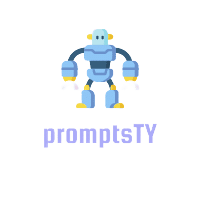Are you struggling to keep your audience engaged when chatting with ChatGPT? It’s a common challenge—finding the right words can feel like searching for a needle in a haystack. You’re definitely not alone in feeling this way!
But don’t worry; if you stick around, I promise you’ll uncover some fantastic tips and tricks for crafting engaging prompts that could transform your conversations.
From proven examples to common pitfalls, you’ll learn how to create prompts that resonate. Let’s dive in and start boosting that user engagement!
Key Takeaways
- Engagement is key—use well-crafted prompts to spark conversations.
- Ask open-ended questions to encourage deeper responses from users.
- Know your audience to tailor prompts that resonate with their interests.
- Avoid vague questions; specificity can drive better engagement.
- Use follow-up questions to keep the dialog flowing and show interest.
- Measure success through response rates and conversation length.

Best Prompts for Boosting User Engagement
Boosting user engagement can be achieved through well-crafted prompts that encourage interaction.
Effective prompts can serve as conversation starters, helping to keep the dialogue flowing and making the experience enjoyable for users.
Here are some best prompts to try:
- “What’s your top hobby and why do you love it?”
- “Tell me about a recent movie that really impacted you.”
- “If you could travel anywhere right now, where would you go?”
- “Describe a memorable event from your past that you cherish.”
- “What’s one book that changed your perspective on life?”
Using these prompts can help create engaging conversation, enhance user interaction, and improve overall user experience.
How to Create Engaging ChatGPT Prompts
Creating engaging ChatGPT prompts involves a mix of creativity and understanding your audience.
Start by thinking about the type of interaction you want to provoke; do you want open-ended responses or specific feedback?
Here are some actionable steps to create effective prompts:
- Understand your audience: Know their preferences, interests, and pain points.
- Ask open-ended questions: These encourage deeper responses and exploration.
- Be clear and concise: Make sure your prompt is easy to understand.
- Use relatable scenarios: Contextual prompts can make for more engaging conversations.
- Experiment with formats: Questions, challenges, and scenarios all elicit different responses.
Try something like, “Imagine you are the main character of a novel. What’s your story?” to spark creativity!
Examples of Effective User Engagement Prompts
If you’re looking to up your engagement game, here are examples of prompts that have proven successful:
These user-friendly prompts can kick off a lively discussion:
- “What changes would you make if you could redesign a holiday?”
- “If you could have dinner with any three people, living or dead, who would you choose?”
- “What invention do you think has changed the world the most?”
- “What’s something you’ve always wanted to learn, and why?”
- “Share an unusual fact about yourself!”
These engagement prompts can lead to rich and fulfilling conversations.
Strategies for Using Prompts to Enhance Conversations
To use prompts effectively, it’s essential to adopt strategies that enhance the flow of conversation.
Here are a few strategies to consider:
- Start with a hook: Use a catchy or interesting statement to draw users in.
- Follow up on responses: Encourage deeper discussion by asking follow-up questions.
- Incorporate themes: Use common themes to keep conversations coherent and engaging.
- Adapt based on user responses: Be flexible in your approach to keep the content relevant.
- Encourage storytelling: Prompt users to share experiences to create a personal connection.
By using these strategies, you’ll enhance user interactions and create richer dialogues.

Tips for Customizing Prompts for Your Audience
Customizing prompts for your audience is crucial for tailoring the user experience.
Start by analyzing who your audience is. Who are they and what interests them?
Consider their age, interests, preferences, and challenges. This will guide your prompt creation.
Here are some tips to help you customize your engagement prompts:
- Use audience language: Speak like your audience speaks. If they’re young and casual, keep it light.
- Focus on relevance: Craft prompts around current events or trends your audience cares about.
- Test and iterate: Don’t be afraid to try new prompts and see how your audience reacts. Their feedback is gold.
- Segment your audience: Create different prompts for different demographics within your audience.
- Utilize surveys: Ask your audience directly what they want to discuss. Their answers will inform your prompts.
For instance, if your audience is made up of lifelong learners, you might ask, “What skill have you always wanted to master and why?”
Common Mistakes to Avoid with Engagement Prompts
Avoiding common pitfalls can help you create more effective engagement prompts.
One major mistake is being too vague. Prompts like “Tell me something” can lead to crickets.
Here are some blunders to steer clear of when crafting your prompts:
- Being overly complicated: Keep prompts simple and clear. If users struggle to understand, they’ll disengage.
- Ignoring feedback: If your audience isn’t responding, it might be time to tweak your approach.
- Too many prompts at once: One strong prompt at a time is better than overwhelming users with options.
- Not personalizing: Using generic prompts can feel robotic; tailor them to make them feel personal.
- Failing to follow up: Don’t leave users hanging. If they respond, acknowledge their input to deepen the conversation.
For example, instead of saying “What do you think?”, specify: “What’s your opinion on how streaming services have changed the way we watch movies?”
Measuring Success: How to Evaluate User Engagement from Prompts
Understanding how well your prompts are performing is essential for continuous improvement.
Start by defining your goals. Are you looking to increase interaction time, or do you want more answers to specific questions?
Here are ways to measure the effectiveness of your engagement prompts:
- Track response rates: Monitor how many users engage with a prompt compared to how many view it.
- Gather qualitative feedback: Ask users what they think about your prompts. This can provide insights you can’t get from numbers alone.
- Analyze conversation length: Longer conversations often indicate higher user engagement.
- Look for repeat interactions: If users frequently engage with similar prompts, that’s a good sign they resonate.
- Utilize analytics: Use tools that track user behavior to understand which prompts work best and which don’t.
For instance, if you notice a specific prompt about travel sparks lots of responses, consider creating more travel-related prompts.
Additional Resources for Learning about Engagement Prompts
If you’re eager to dive deeper into crafting effective engagement prompts, there are plenty of resources available.
Books, courses, and online communities can offer invaluable insights and tips.
Here are some recommendations to help you expand your knowledge:
- Books: Look into titles focused on conversational design or user engagement strategies. These can provide well-rounded perspectives.
- Online courses: Platforms like Coursera and Udemy offer courses specifically about creating engaging content and interactions.
- Webinars: Attend webinars hosted by experts on user engagement and prompt creation for up-to-date tips and strategies.
- Blogs and articles: Regularly check reputable blogs that focus on AI and user experience for fresh ideas.
- Communities: Join online forums or social media groups dedicated to ChatGPT or user engagement. Learning from peers is priceless.
For instance, searching for “chatbot engagement strategies” can yield numerous valuable resources.

Common Mistakes to Avoid with Engagement Prompts
Avoiding common pitfalls can help you create more effective engagement prompts.
One major mistake is being too vague; prompts like “Tell me something” can lead to crickets.
Here are some blunders to steer clear of when crafting your prompts:
- Being overly complicated: Keep your prompts simple and clear. If users struggle to understand, they’ll disengage.
- Ignoring feedback: If your audience isn’t responding, it might be time to tweak your approach.
- Too many prompts at once: One strong prompt at a time is better than overwhelming users with options.
- Not personalizing: Using generic prompts can feel robotic; tailor them to make them feel personal.
- Failing to follow up: Don’t leave users hanging. If they respond, acknowledge their input to deepen the conversation.
For example, instead of saying “What do you think?”, specify: “What’s your opinion on how streaming services have changed the way we watch movies?”
Measuring Success: How to Evaluate User Engagement from Prompts
Understanding how well your prompts are performing is essential for continuous improvement.
Start by defining your goals. Are you looking to increase interaction time, or do you want more answers to specific questions?
Here are ways to measure the effectiveness of your engagement prompts:
- Track response rates: Monitor how many users engage with a prompt compared to how many view it.
- Gather qualitative feedback: Ask users what they think about your prompts. This can provide insights you can’t get from numbers alone.
- Analyze conversation length: Longer conversations often indicate higher user engagement.
- Look for repeat interactions: If users frequently engage with similar prompts, that’s a good sign they resonate.
- Utilize analytics: Use tools that track user behavior to understand which prompts work best and which don’t.
For instance, if you notice a specific prompt about travel sparks lots of responses, consider creating more travel-related prompts.
Additional Resources for Learning about Engagement Prompts
If you’re eager to dive deeper into crafting effective engagement prompts, there are plenty of resources available.
Books, courses, and online communities can offer invaluable insights and tips.
Here are some recommendations to help you expand your knowledge:
- Books: Look into titles focused on conversational design or user engagement strategies. These can provide well-rounded perspectives.
- Online courses: Platforms like Coursera and Udemy offer courses specifically about creating engaging content and interactions.
- Webinars: Attend webinars hosted by experts on user engagement and prompt creation for up-to-date tips and strategies.
- Blogs and articles: Regularly check reputable blogs that focus on AI and user experience for fresh ideas.
- Communities: Join online forums or social media groups dedicated to ChatGPT or user engagement. Learning from peers is priceless.
For instance, searching for “chatbot engagement strategies” can yield numerous valuable resources.
FAQs
Effective prompts for user engagement include open-ended questions, challenges, and personalized requests that encourage users to share experiences, thoughts, or feedback, fostering interaction and dialogue.
Success can be measured through metrics such as response rate, user retention, feedback quality, and interaction duration, enabling you to assess the effectiveness of your prompts.
Common mistakes include using vague prompts, failing to customize for your audience, overloading users with questions, and not allowing time for responses. These can hinder interaction and engagement.
To customize prompts, analyze your audience’s interests and preferences, use relevant language, incorporate feedback, and personalize interactions to create a more engaging experience tailored to their needs.
